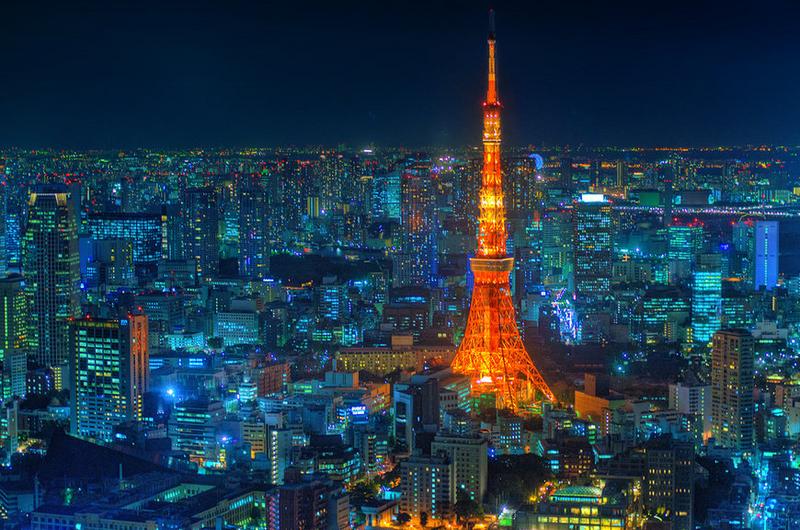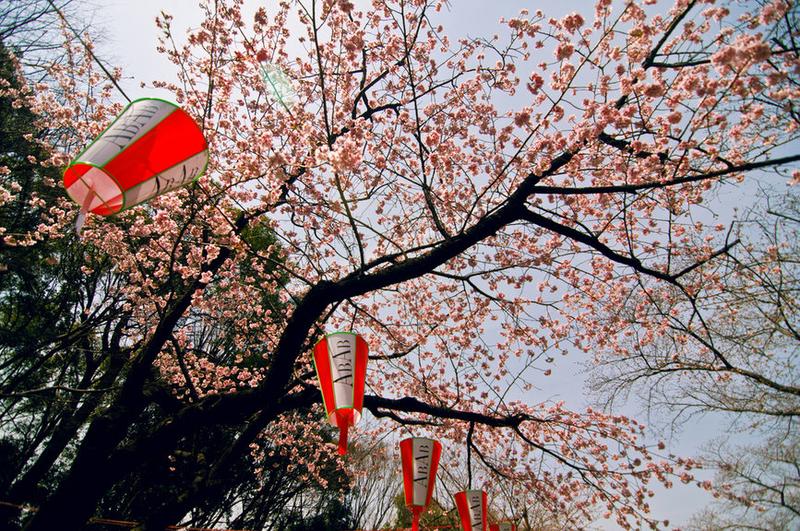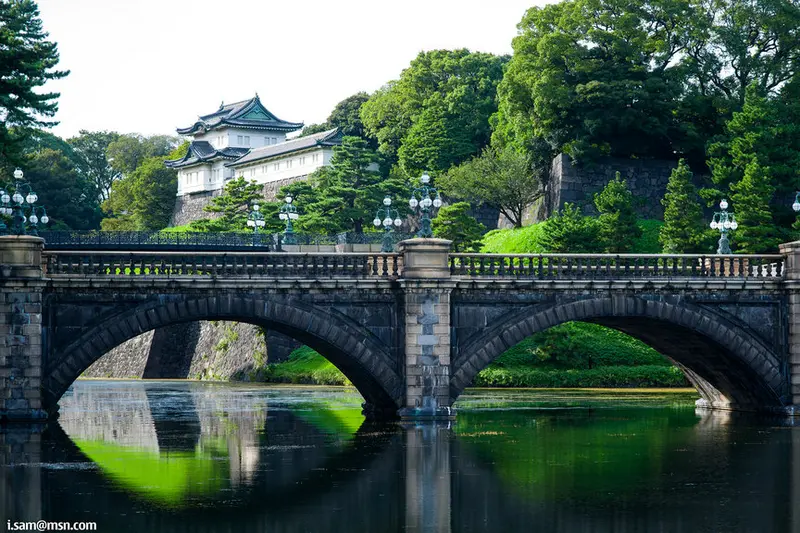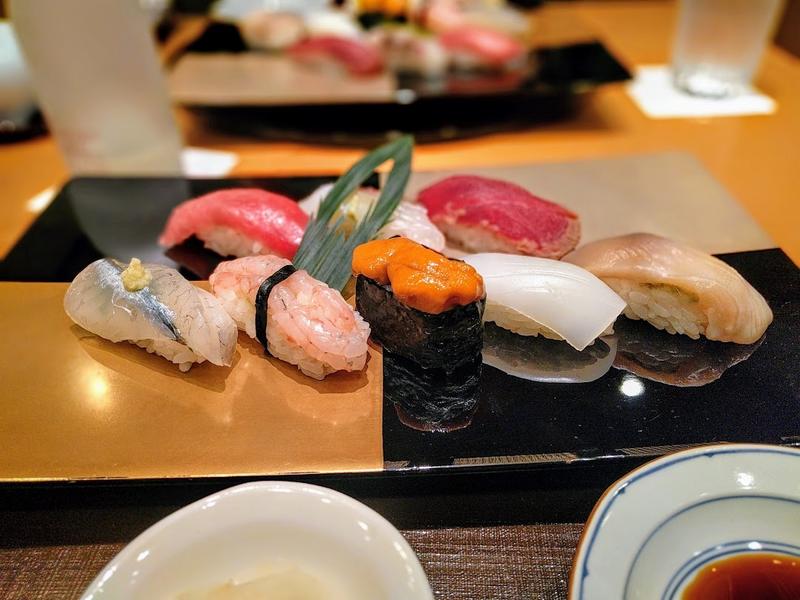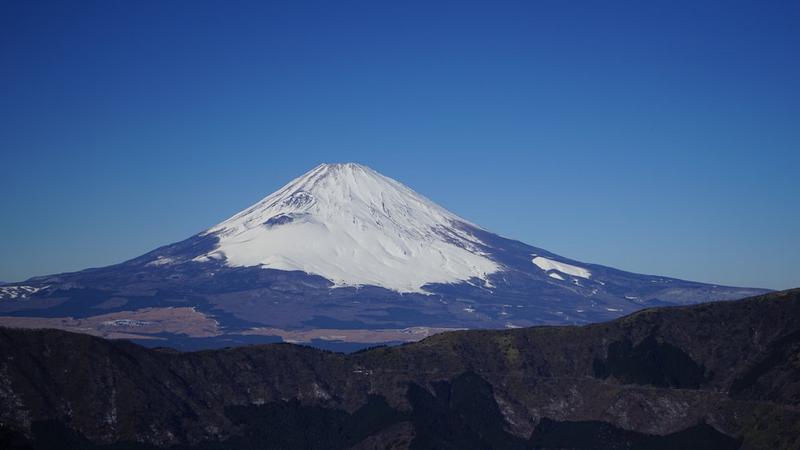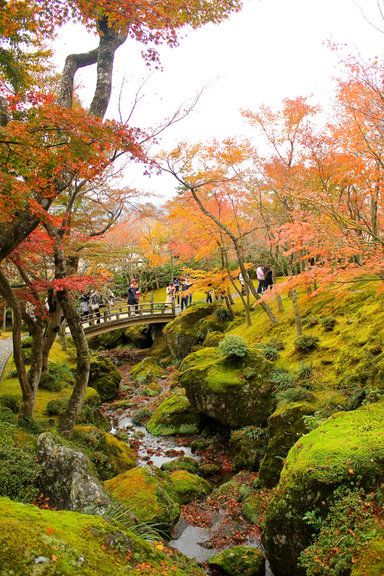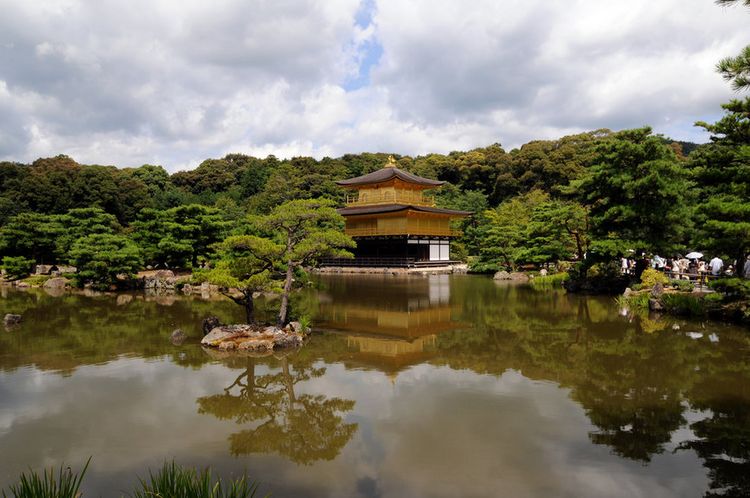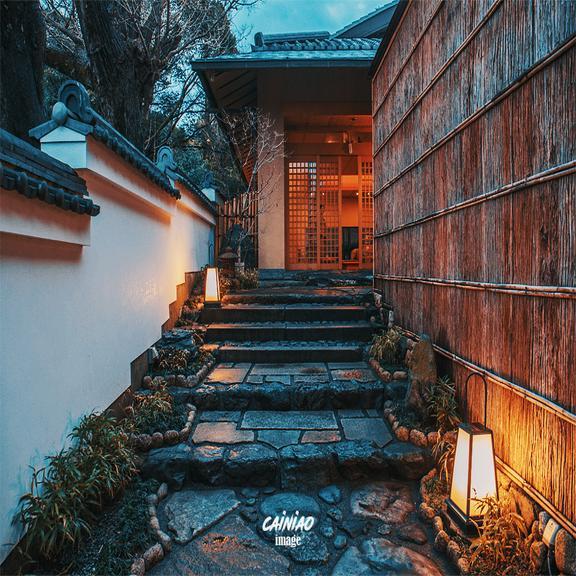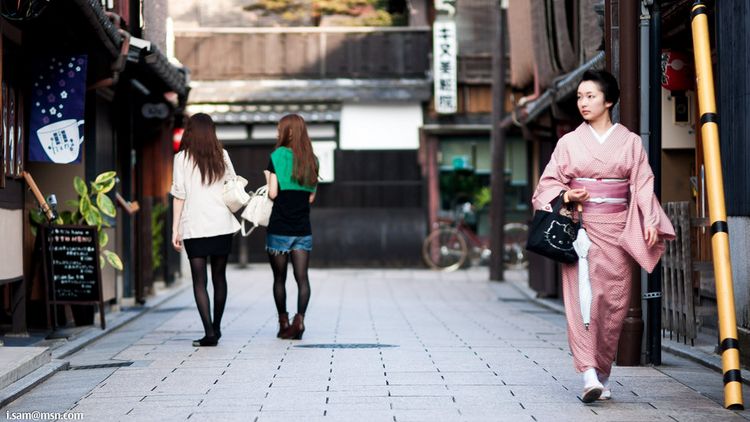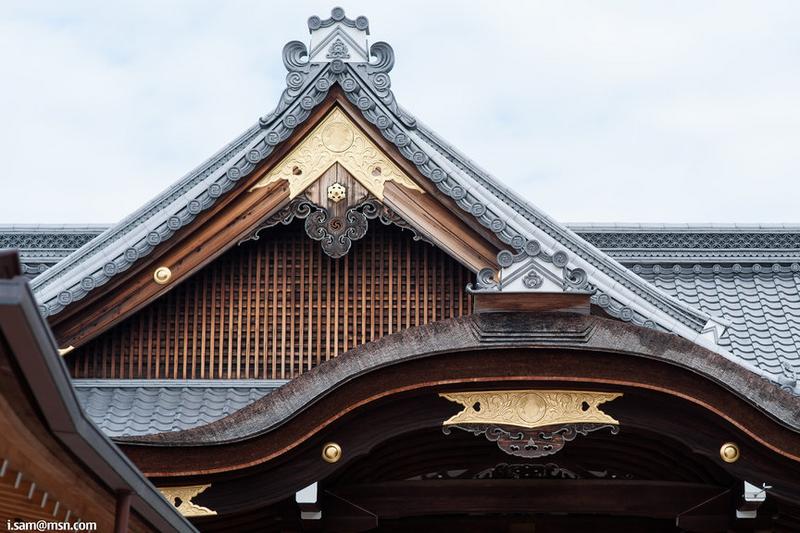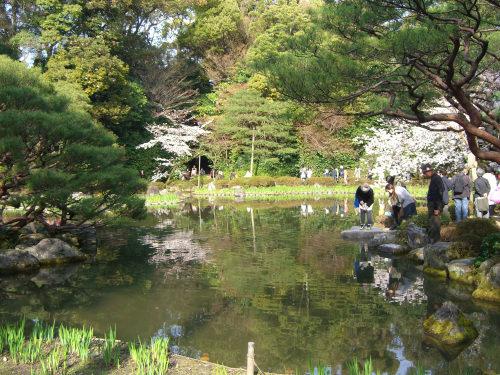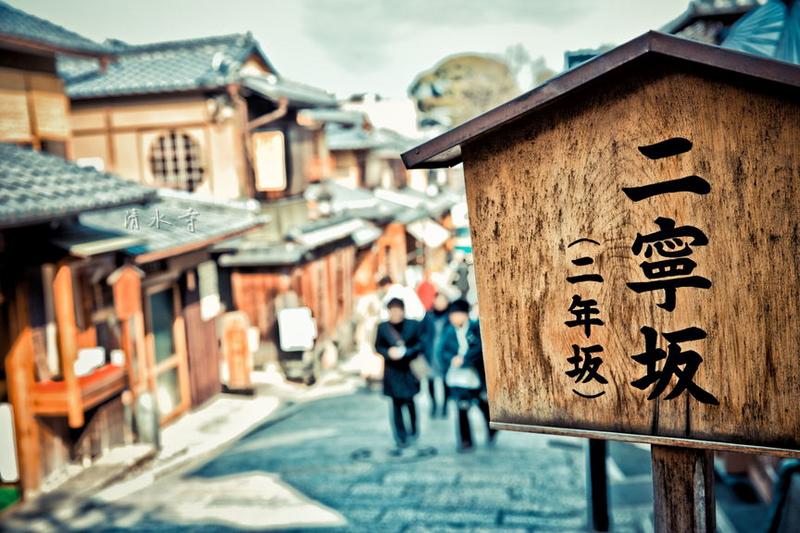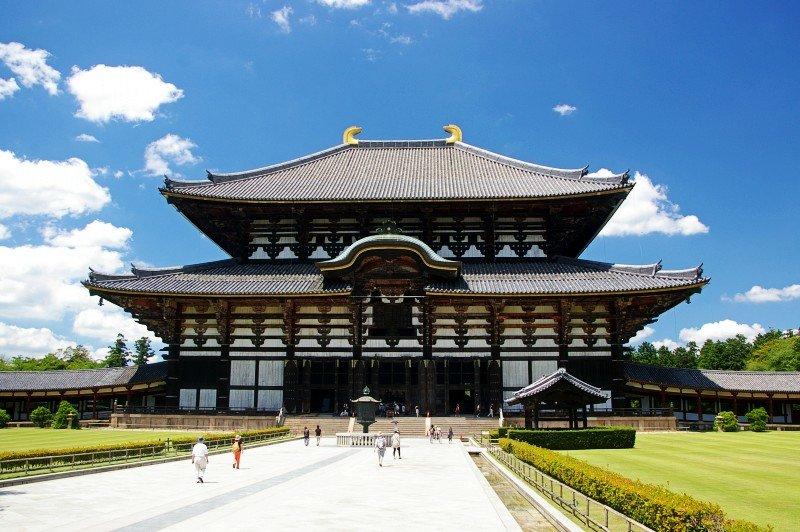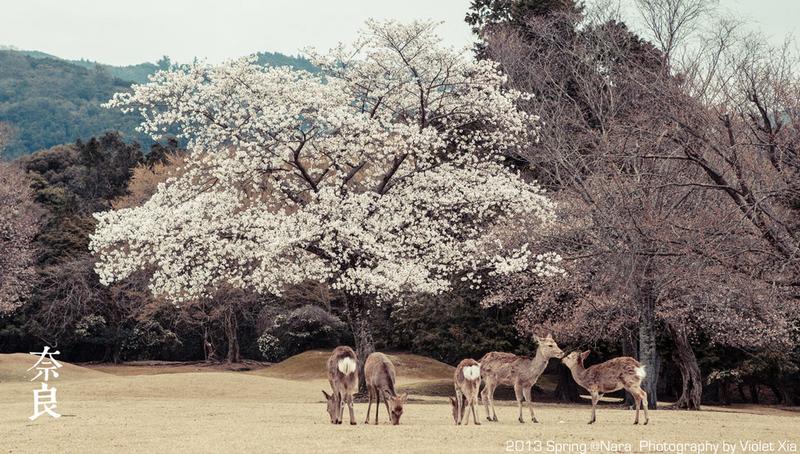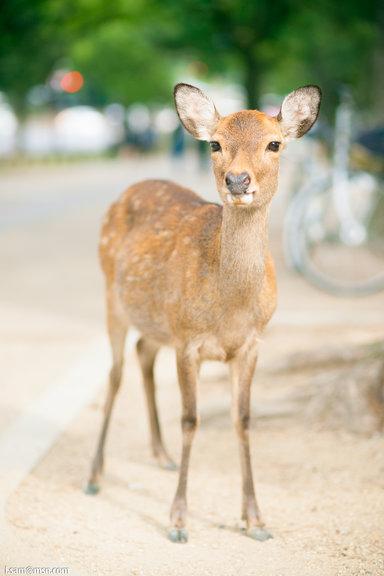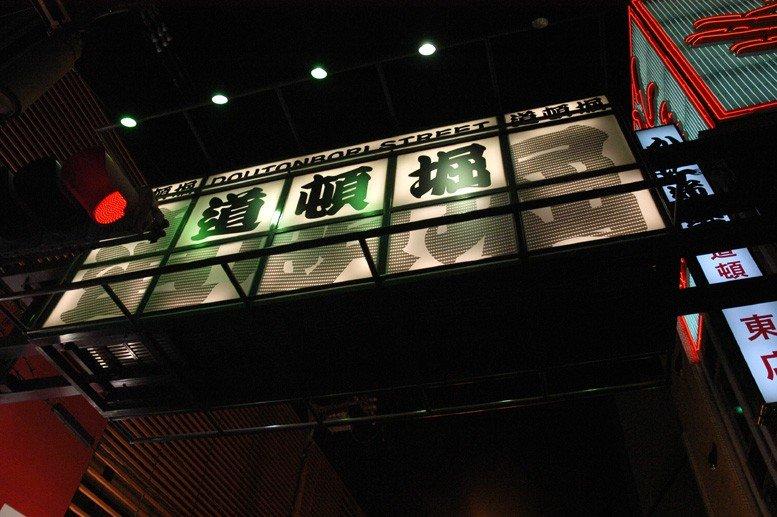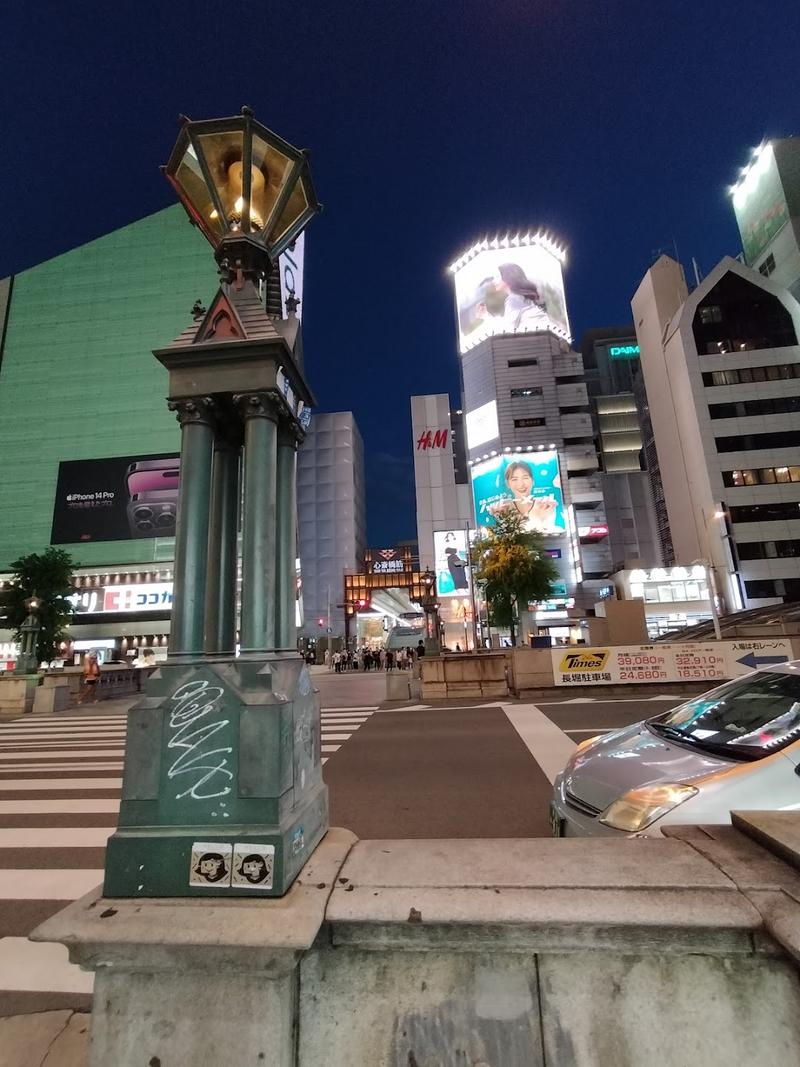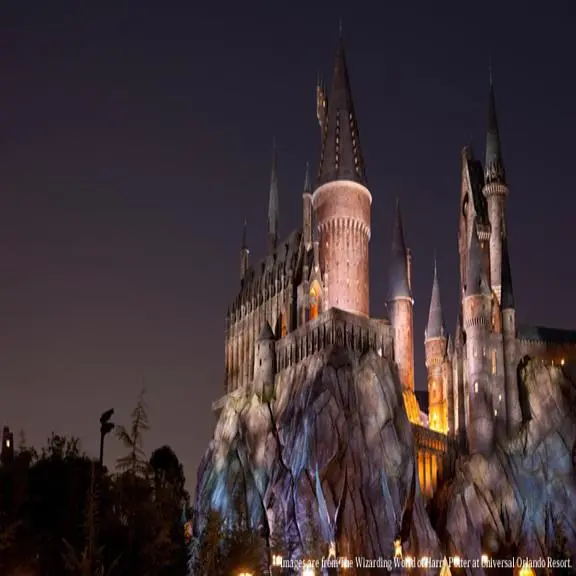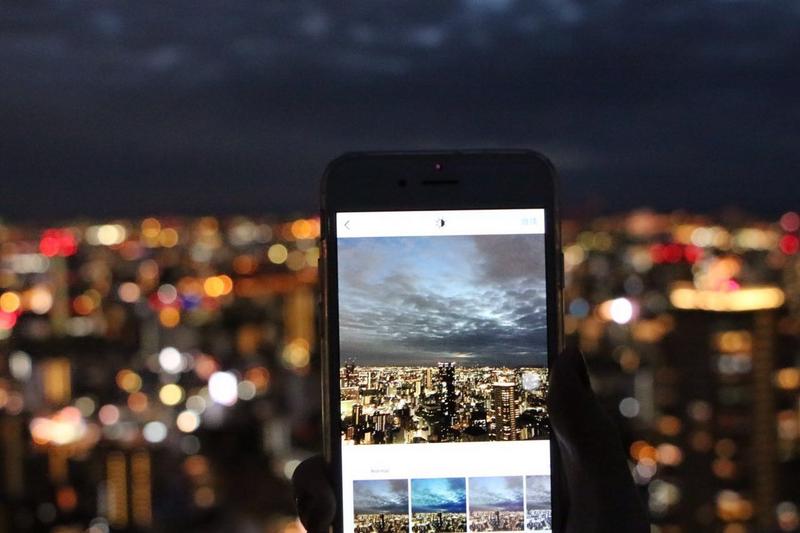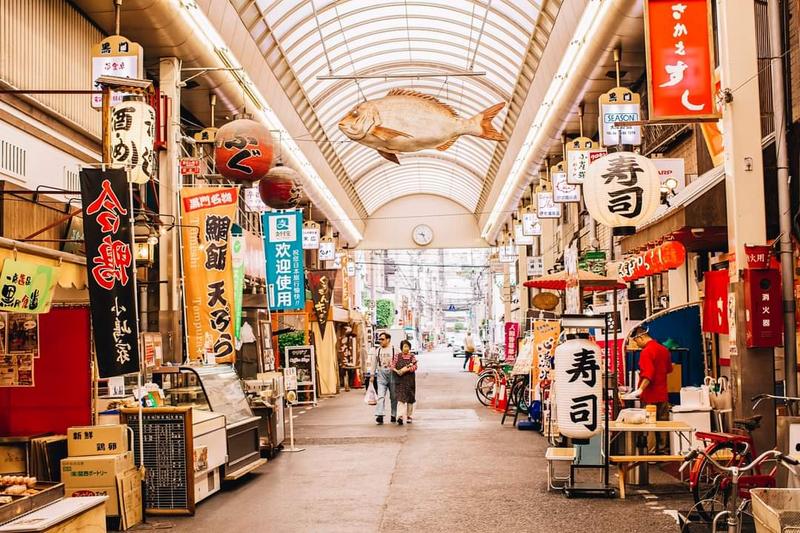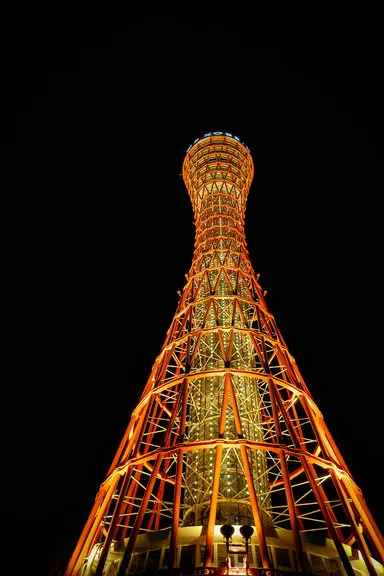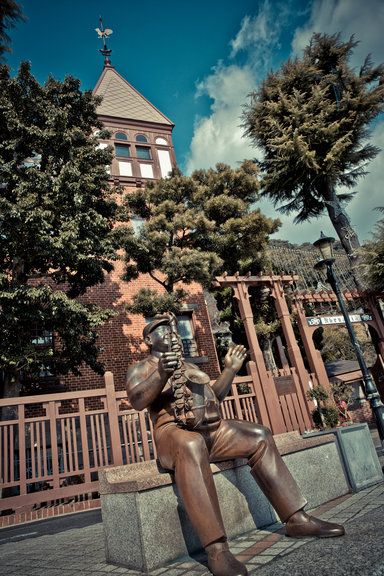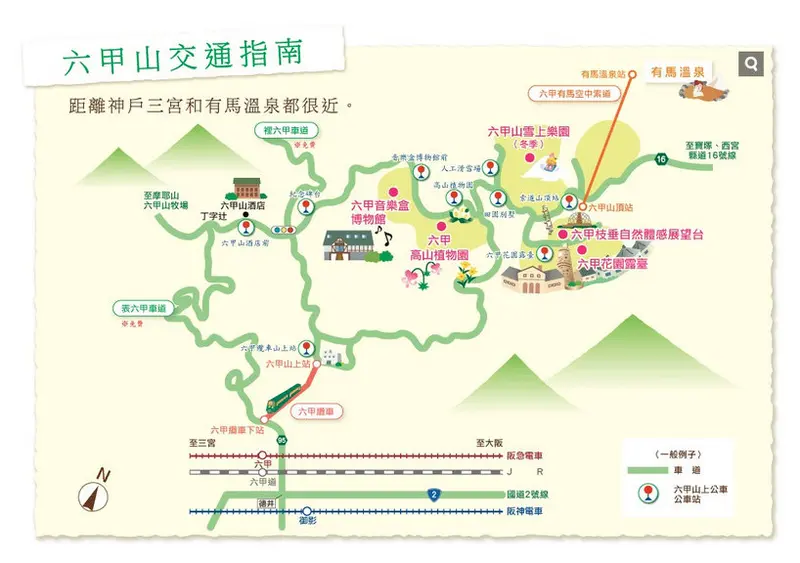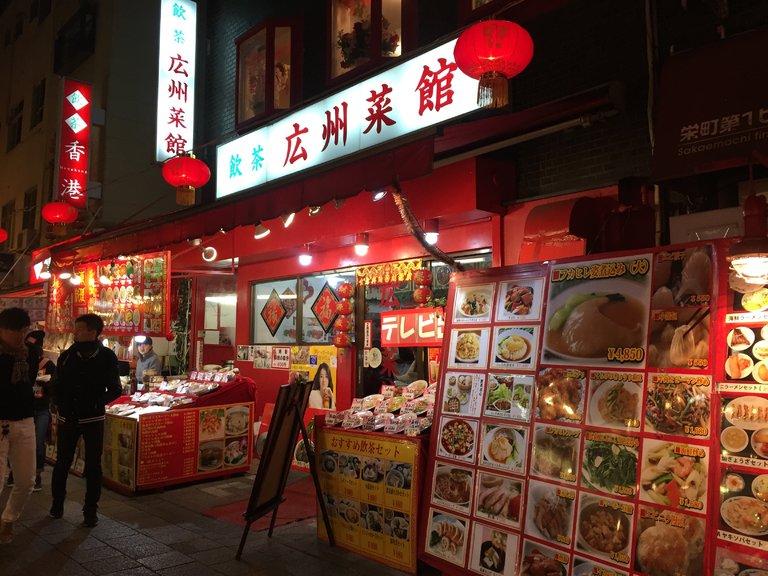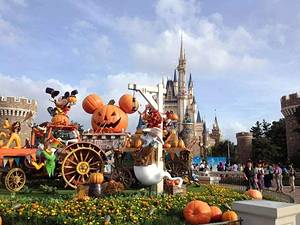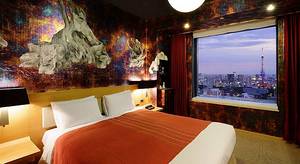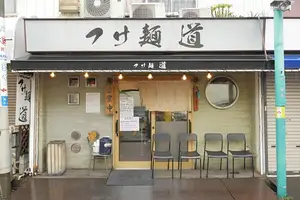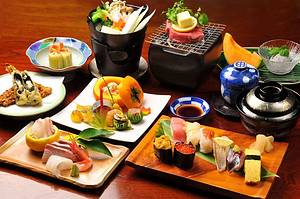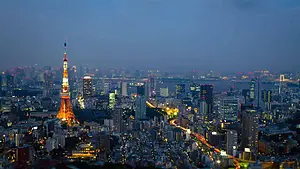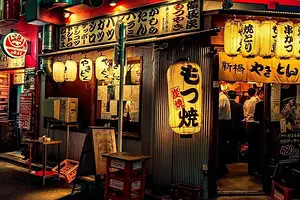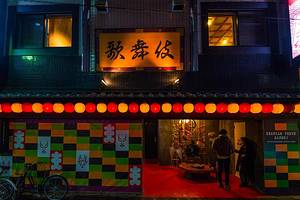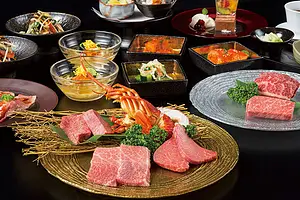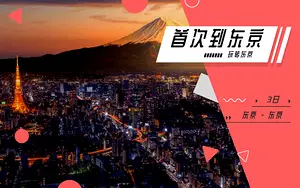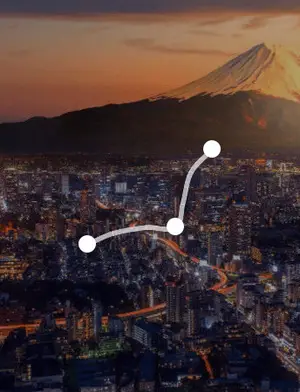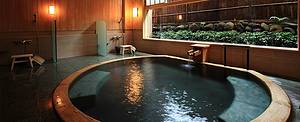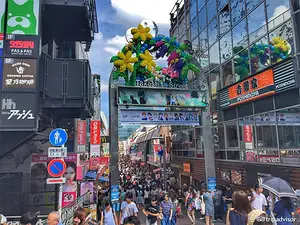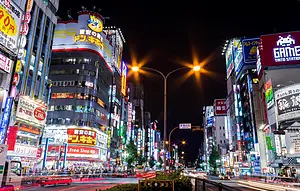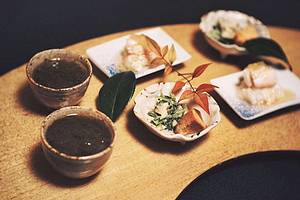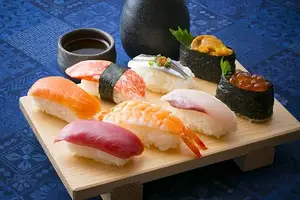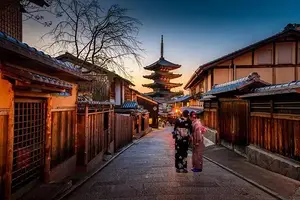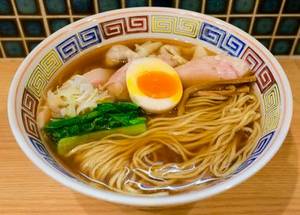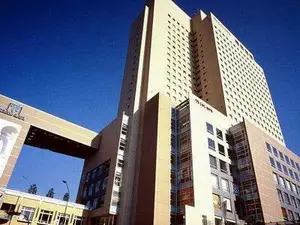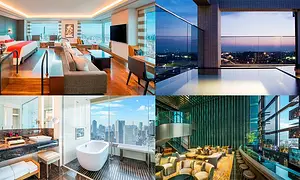Ten Days in Japan: Culture, Food and Nature in One Package
6 cities |
29 attraction(s) |
total distance 583
km
 TIPS
TIPS
Day1
Day2
Day3
Day4
Day5
Day6
Day7
Day8
Day9
Day10
Day1: Tokyo
3 attraction(s) ·
14 km
1
Tokyo Tower, also known as Nihon Denpa-tō, is located in Shiba Park, Minato Ward, Tokyo, Japan. It is a red and white tower modeled after the Eiffel Tower in Paris, standing at a height of 332.6 meters, 8.6 meters taller than the Eiffel Tower. Built in October 1958, it was once the tallest structure in Tokyo until the completion of Tokyo Skytree (634 meters) in February 2012, and has always been one of the landmarks of Tokyo. The tower has an observation deck at the top, offering panoramic views of the entire Tokyo metropolitan area, with a clear view of Mount Fuji on a clear day. The tower's lighting changes colors according to the season, with special decorations for holidays such as Christmas.
7
km
2
Ueno Park is one of Tokyo's famous parks, covering a large area and hosting multiple facilities such as a zoo, art museum, and museums. It also has a rich natural landscape, including famous landmarks such as Shinobazu Pond and Takegata Fountain. The park's most famous symbol is the bronze statue of Takamori Saigo. In spring, Ueno Park is a popular spot for cherry blossom viewing in Tokyo, where visitors can admire the beautiful cherry blossoms in full bloom.
7
km
3
Started as a kimono store in 1886, this famous destination is now known for high fashion shopping.
Day2: Tokyo
3 attraction(s) ·
3 km
1
The Imperial Palace is a representative landmark in the center of Tokyo, consisting of the Imperial Palace Plaza, Niju Bridge, Imperial Palace Outer Garden, and Imperial Palace East Garden. During the Meiji Restoration, the Emperor moved from Kyoto to this location, giving it the name "Imperial Palace". Now, a portion of the area is open to the public as a park, with entrances at Hibiya Station to the south and Otemachi Station to the north.
Despite the surrounding skyscrapers, the Imperial Palace still retains the atmosphere of the Edo period, giving a strong sense of history. As a symbolic building of Tokyo, it has witnessed the changes of time and protected the descendants of Edo.
Around the Imperial Palace, taking a stroll along the moats, you can see the walls of the Edo Castle, as well as sculptures of the samurai Kumasu Narimasa, beautiful carved decorations on the entrance gate of Otemon, and the entrance to the Kitamru Park at the Tateyammon. In the East Garden, there is the Nino-Maru, where you can see the grand shogunate villa and exquisite gardens, which are precious legacies from the Edo period.
2
km
Day3: Hakone
3 attraction(s) ·
8 km
1
Owakudani in Hakone is a famous tourist spot and hot spring resort near Tokyo. It is the site of volcanic activity with constantly gushing hot springs and white gas clouds, reminiscent of volcanic eruptions from around 3,000 years ago. From the observation points, visitors can enjoy a magnificent view of Mount Fuji. Viewing Owakudani from the cable car, one deeply feels the name "Hell Valley." Although the spring water in Owakudani is toxic, it is a popular tourist spot with rich activities, including the famous "Hot Spring Black Eggs." Boiled with high temperature sulfur spring water, the eggshells turn black due to the sulfur in the water, making the eggs even more delicious. In addition, visitors can see the eruptions of sulfur gas and, on clear days, enjoy an almost close-up view of the beautiful Mount Fuji. For "EVA" anime fans, Owakudani is where the protagonist Shinji finally stops, and the desolate mountain walls and white gas clouds match perfectly with scenes from the animation.
2
km
2
In 1952, the Hakone Museum of Art was established. The museum houses ancient calligraphy works and watercolor paintings from Japan, China, and Korea, as well as old ceramics from Japan and other Eastern countries. There are a large number of exhibits here. It is also a typical Japanese-style garden, where visitors can enjoy art works and overlook the scenery of the Kyu-Karuizawa area, especially beautiful during the autumn season.
6
km
Day4: Kyoto
3 attraction(s) ·
7 km
1
Kinkaku-ji, also known as the Golden Pavilion, was originally built as a retirement villa for the shogun Ashikaga Yoshimitsu in 1397. It later became a Zen temple. The name "Golden Pavilion" comes from the gold leaf that covers its exterior. In 1950, the temple was unfortunately set on fire and the golden building was burned down, but it has since been rebuilt to its former glory. Kinkaku-ji is a three-story building with the first floor called Hojo, the second floor housing a shrine dedicated to Kannon, and the third floor as a square-shaped Buddhist hall with three statues of Buddha. The temple's golden reflection shimmering in the surrounding Mirror Pond is a beautiful sight and one of the iconic landmarks of Kyoto.
Unlike other attractions, visitors of Kinkaku-ji do not enter with a ticket, but instead receive a stamp with a blessing. Within the temple grounds, visitors can use Chinese and Korean fortune slips for divination and purchase the famous matcha ice cream.
6
km
2
Gion Corner is a theater that showcases traditional Kyoto performing arts. The performances usually last around an hour and include Kyoto-style dance, tea ceremony, flower arrangement, koto music, Noh theater, and Bunraku puppetry. Visitors can experience the rich cultural heritage of Kyoto through these performances. Additionally, the Kabuki Gallery displays stage videos and Kabuki-related items such as hairpins.
1
km
3
Hanamichi, located in the Higashiyama district of Kyoto, is a north-south street. The most famous section is the old-fashioned street from Kennin-ji Temple. There is also the famous Kaburenjo Theater, where grandiose dance performances by Kabuki actors and Geishas are held in spring and autumn.
The buildings along the street are full of Kyoto's distinctive features. This year, Leica and Hermès have opened alternative experiential stores here. By crossing four intersections from Hanamichi towards the north, you can reach the elegant southern end of Shirakawa.
Visiting Q-Home upstairs for a Hanamichi kimono experience and transformation, and then taking photos on Hanamichi street is an excellent local experience. On weekends, Japanese girls may also invite their friends to dress up in kimonos and take photos here. If you're lucky, in the evening, you might even encounter hurried Kabuki actors and Geishas going to tea houses for work.
It is important to note that Hanamichi street can get crowded with people and vehicles are allowed to pass through. Therefore, when taking photos, it is necessary to be mindful of vehicles and ensure your own safety.
Day5: Kyoto
3 attraction(s) ·
7 km
1
Nijo Castle is located in the center of Kyoto. It was built by the first shogun of the Tokugawa shogunate, Tokugawa Ieyasu, and it was the place where the last shogun, Yoshinobu Tokugawa, returned political power to the emperor. Nijo Castle preserves the art and architecture of Japan's Momoyama Period and is recognized as a UNESCO World Cultural Heritage site. The Honmaru, or main palace, is an important cultural property, while the Ninomaru Palace is a national treasure, featuring rooms where the shogun received daimyo lords and lived. The castle's gardens are also famous for their traditional Japanese design. Nijo Castle also features a corridor called the "Nightingale Floor," which was designed as a security measure to detect intruders. While the Honmaru is normally not open to the public, visitors can explore the Honmaru Garden. Additionally, Nijo Castle is a popular spot for cherry blossom viewing and showcases vibrant autumn colors, making it a must-visit destination for travelers in Kyoto. The castle grounds also offer pedestrian streets and shops for visitors to enjoy local specialties and take breaks during their sightseeing.
4
km
2
In 1895, Heian Shrine was built to commemorate the 1100th anniversary of the capital being moved to Heian (present-day Kyoto). Located in the historic city of Kyoto, it enshrines the first and last emperors. The shrine gardens, centered around four ponds behind the main hall, incorporate various styles from different eras, showcasing the Meiji architectural style known as "pond, spring, and meandering stream." Heian Shrine is a national treasure and serves as the venue for the "Jidai Matsuri," one of Kyoto's three major festivals. On October 22nd each year, people dress in traditional costumes and participate in a grand procession, reviving the atmosphere of the ancient capital in a truly awe-inspiring way.
4
km
3
Day6: Nara
3 attraction(s) ·
2 km
1
Todai-ji Temple is a famous temple of the Hua-yen Sect in Japan, also known as Da Hua-yen Temple, the Four Heavenly Kings Hall of the Golden Light Guard Temple, and so on. It is located in the eastern part of Heijo-kyo (now Nara), and is one of the seven great temples of the southern capital, with a long history of about 1200 years. In 1998, Todai-ji Temple was listed as a World Cultural Heritage Site as a part of the historical relics of ancient Nara. The Great Buddha Hall of Todai-ji is one of the largest wooden buildings in the world, with a frontage of 57 meters and a depth of 50 meters. Within the Great Buddha Hall stands the 15-meter-high Rushana Buddha. In addition, there are other famous buildings in the Todai-ji Temple complex such as the South Gate, the February Hall, the March Hall, and the Shoso-in Repository, all having extremely high historical, cultural, and artistic value.
2
km
2
The headquarters of Kasuga Shrine in Japan, the shrine is not very big, but it includes facilities such as Manyo Botanical Garden and Treasure Hall; it is a very charming shrine, with stone lanterns from various eras on both sides of the approach, creating a unique landscape. The presence of small deer adds to the lively atmosphere.
1
km
3
Encounter a fairy tale of deer and cherry blossoms, Nara Park is famous for its approximately 1,200 free-roaming deer. On the vast land area of 660 hectares, various cherry blossom trees, mainly including Yae-zakura, are planted.
Day7: Osaka
3 attraction(s) ·
6 km
1
どうとんぼり
Dotonbori is Osaka's most bustling district and also the local food center. It is the birthplace of Osaka's food culture and attracts many travelers who come to taste the cuisine. From takoyaki, teppanyaki, yakiniku, kushikatsu, revolving sushi to fugu cuisine, it covers almost all of Osaka's characteristic cuisine, even inconspicuous small shops can serve delicious food. This longing food culture fully demonstrates the appetite of the people of Osaka, and it's not uncommon to eat until bankrupt.
If you want to recommend a few stores, it is recommended to try the “Kinryu Ramen” with always-long queues in front of the store, the teppanyaki original “Botechu” and the famous store “Konamon Museum”, where you can experience the experience of tasting and making takoyaki. In addition, “Osaka Ohsho” and “Kani Douraku” are also worth trying. The most authentic taste of these two nationally known chains is in their main stores.
In addition to food, you can also visit Hozenji Temple, go to the Matsuzakaza to enjoy Kabuki performances, take a walk along Dotonbori River at night, enjoy the colorful neon lights, and experience the feel of the Edo period.
3
km
2
Osaka Castle Park is a large green space park in Chuo Ward, Osaka City. The park has multiple public facilities including Osaka Castle International Cultural Sports Hall, Sun Plaza, Softball Field, Open-air Music Hall, and Rugby/Football Field. In the center of the park stands Osaka Castle Tower, where visitors can go to the observation deck for a fee and visit the historical museum. From the top floor, you can overlook the beautiful scenery from Mt. Ikoma to Osaka Bay. Every Sunday during the day, there are amateur bands playing street music in the park. Various trees are planted in the park, and the cherry blossom and plum blossom seasons are good times to enjoy the flowers. The observation deck offers a view of wild birds feeding on the riverbank, making it a suitable place for family outings.
3
km
3
Urban arcade with a wide variety of stores amid bright advertising signage & pedestrian crowds.
Day8: Osaka
3 attraction(s) ·
12 km
1
USJ, or Universal Studios Japan, is a super popular theme park among travelers in Japan, just like Tokyo Disneyland. If you are traveling to the Kansai region, you shouldn't miss this place. Besides enjoying the beautiful scenery of Osaka, coming to Universal Studios to experience a unique thrill and joy is also a great choice. Here, you can participate in various exciting entertainment facilities themed around Hollywood movies, such as watching Spider-Man swinging around, avoiding the jaws of a giant shark, witnessing roaming dinosaurs, and experiencing the danger of being chased by zombies in Resident Evil. The park also offers various interesting themed restaurants and mesmerizing nighttime parade performances.
The Harry Potter-themed area, which opened in July 2014, is loved by visitors. It not only highly recreates the scenes from the original works but also sells a large number of exquisite merchandise. The park is conveniently located and close to Osaka Station, and the waiting time for rides is much shorter compared to Disneyland. The opening and closing times vary daily, so travelers who want to see the nighttime parade should check the official website in advance and plan accordingly. UnionPay cards starting with 62 can be conveniently used for payment and cash withdrawal here, and most ATMs also provide Chinese interfaces, making it more convenient for visitors to enjoy the park.
7
km
2
The Umeda Sky Building, located in the northern part of Osaka Station, is a high-rise interconnected building with 40 above-ground floors and 2 underground floors. Composed of Tower East and Tower West, the top is connected by a circular sky garden, making it one of the few buildings in Japan with a 360-degree open rooftop observatory. It is not only a popular viewing spot for one of Japan's "100 Sunset Views," but also a great place to enjoy the bustling night view of Osaka after dark. The observatory has special seats designed for couples and an aerial courtyard grand shrine where people can pray for love. The fluorescent stone floor on the rooftop creates a romantic and mysterious atmosphere, making it a popular dating spot for travelers and couples.
5
km
3
Spacious market with vendors selling street food, fresh produce & shellfish, plus souvenirs.
Day9: Kobe
3 attraction(s) ·
14 km
1
The Kobe Port Tower, completed in 1963, is one of Kobe's landmarks. Located in Meriken Park, it features facilities such as the Maritime Museum and hotels, making it a popular tourist attraction. This red tower is constructed using a truss structure, with a beautiful curved design. Standing at a height of 108 meters, the top observation deck offers a 360-degree view of the beautiful scenery, overlooking the bustling streets of Motomachi, Kitano, and Nanking, as well as views of Osaka, Awaji Island, Akashi Kaikyo Bridge, Kobe Airport, and Mount Rokko. Inside the tower, there is a revolving café and a souvenir market, providing convenience for visitors. Illuminated at night, the vibrant red exterior wall appears even more beautiful, creating a striking contrast with the neighboring white exterior of the Kobe Maritime Museum.
3
km
2
Foreigners' residences in Western-style architecture, known as Ijinkan, from the Meiji era are still preserved in the Kitano area of Kobe. With the expansion of Kobe Port in the 1960s, more Ijinkan were built, creating a street full of exotic charm. Visitors can now enjoy visiting around 20 open Ijinkan, which were once homes of Swiss traders transformed into restaurants and more. One of the most representative buildings is the "Weathercock House" built in 1909, known for its red brick exterior and harmonious Art Nouveau interior. Another notable example is the "Moegi House" built in 1903, which used to be the residence of the U.S. Consul General and attracts attention for its architectural style.
12
km
3
Silver Soup Hot Spring is a day-trip hot spring. Unlike Gold Soup Hot Spring, its water is naturally colorless and is a natural carbonated spring. Silver Soup Hot Spring has facilities such as a steam bath, a large bath, and a sauna pool. Compared to Gold Soup Hot Spring, there are fewer visitors here, and the price is more affordable.
Day10: Kobe
2 attraction(s) ·
13 km
1
Mount Rokko is located in the eastern and northern parts of Kobe City in Hyogo Prefecture, Japan, and has an elevation of 931.25 meters. The mountain area is designated as Seto Inland Sea National Park and is also one of Japan's famous Hyakumeizan (Hundred Famous Mountains) and one of the 50 mountains in Hyogo Prefecture.
13
km
2
Nankin-machi is a narrow area located between Motomachi-dori and Sakaemachi-dori in Kobe, Japan. It is also the registered trademark of Nankin-machi Shopping Street Revitalization Association. With a history of 140 years, Nankin-machi is approximately 200 meters long from east to west and about 110 meters long from north to south, with around 100 Chinese restaurants, food stores, and grocery shops. The shops and the lanterns on the street are decorated in Chinese style, with red, blue, yellow, green, and gold colors dominating the decorations. During holidays, local residents and tourists flock to this area, especially during the Chinese New Year in February, where they can enjoy performances such as dragon dances and lion dances, creating a festive atmosphere. Nankin-machi is one of Japan's three major Chinatowns, along with Yokohama Chinatown and Nagasaki Shinchi Chinatown.
